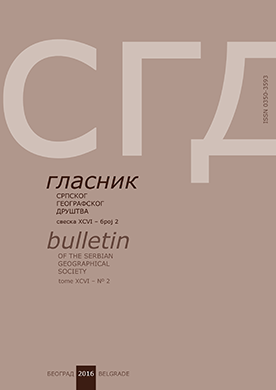Међународне миграције и одговарајуће политике према њима у Европи у периоду од 1950. до 2015. године
International migration and related policies in Еurope 1950 - 2015
Author(s): Rinus PenninxSubject(s): Human Geography, Migration Studies
Published by: Српско географско друштво
Keywords: migration;immigration;policies;Europe
Summary/Abstract: Immigration in Europe has been shaped by: a) its particular development in time; b) the geographical patterns of migration within and towards European countries; and c) the shifting types of migration and characteristics of migrants involved. The first part of this contribution outlines changes in these three basic migration-related factors. Migration outcomes are not haphazard nor are these the result of unhindered economic push and pull factors in a free market. Immigration policies of receiving countries do greatly influence the volume and patterns of migration, the place of settlement and the characteristics of migrants. Regulations on conditions of residence and integration do furthermore influence significantly the position of immigrants in their new destination, among others by setting conditions for their stay (residence rights) and access to the labour market. The second part of this chapter outlines the migration and integration regimes that have been developed by states of different parts of Europe and by the European Union. In conclusion, immigration has become a relevant phenomenon in all EU countries. However, as a consequence of different timing of immigration, different socio-economic contexts and varying governmental migration and integration policies, European countries are confronted with different forms migration (immigration, emigration, transit migration) and with different types of migrants. European states have also developed different governmental policies of migration and integration. Historically, a common denominator in the framing of European policies is that countries do not see themselves as immigration countries; they are immigration countries against their will. In recent times, such framing is reinforced by populist and nationalist movements that see immigrants not only as economic competitors, but also as a threat to the national "culture and world views". The more Europe needs immigrants for economic and demographic reasons, the less they are welcomed for cultural and political reasons.
Journal: Гласник Српског географског друштва
- Issue Year: 96/2016
- Issue No: 2
- Page Range: 18-41
- Page Count: 24
- Language: English

